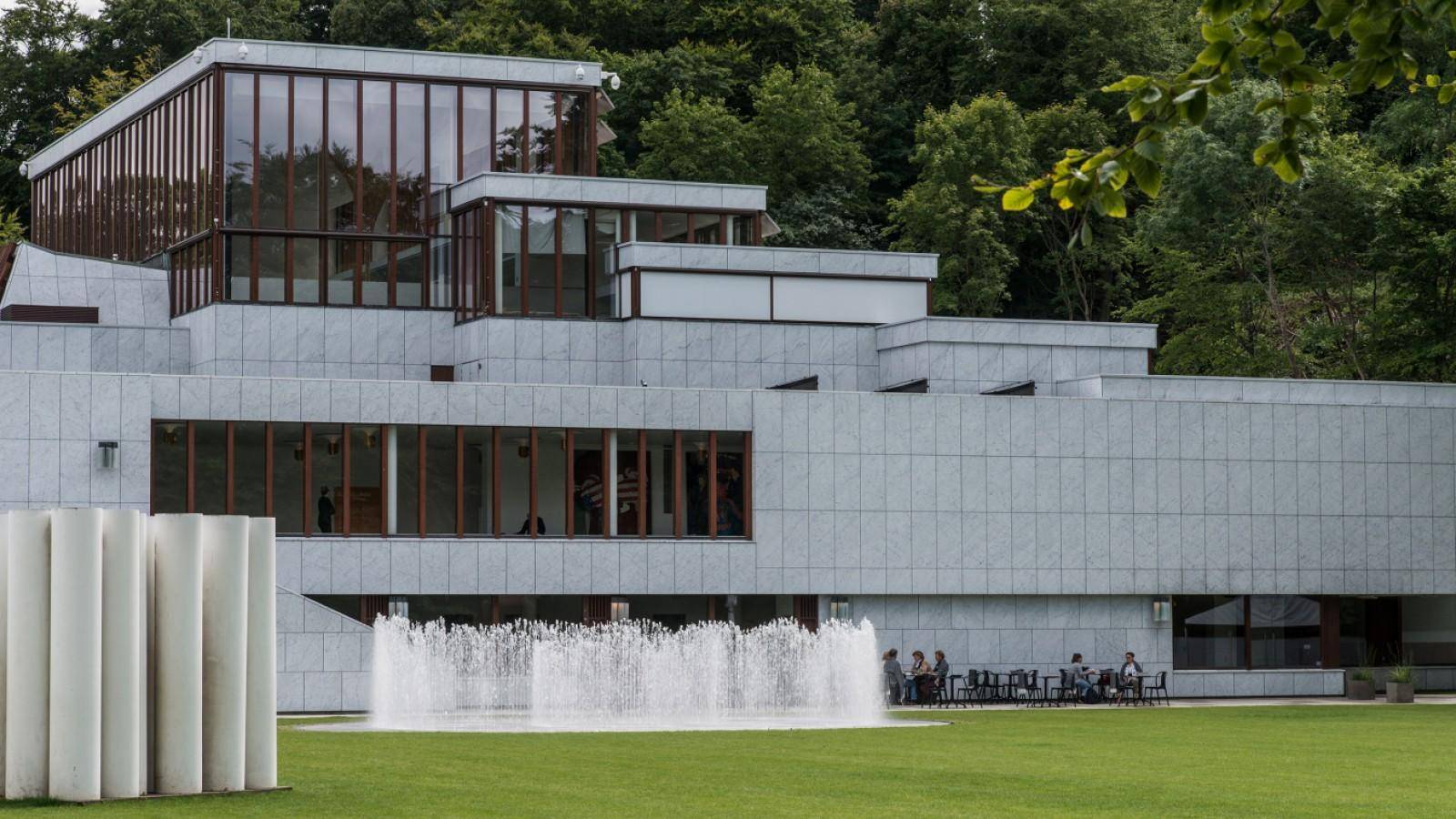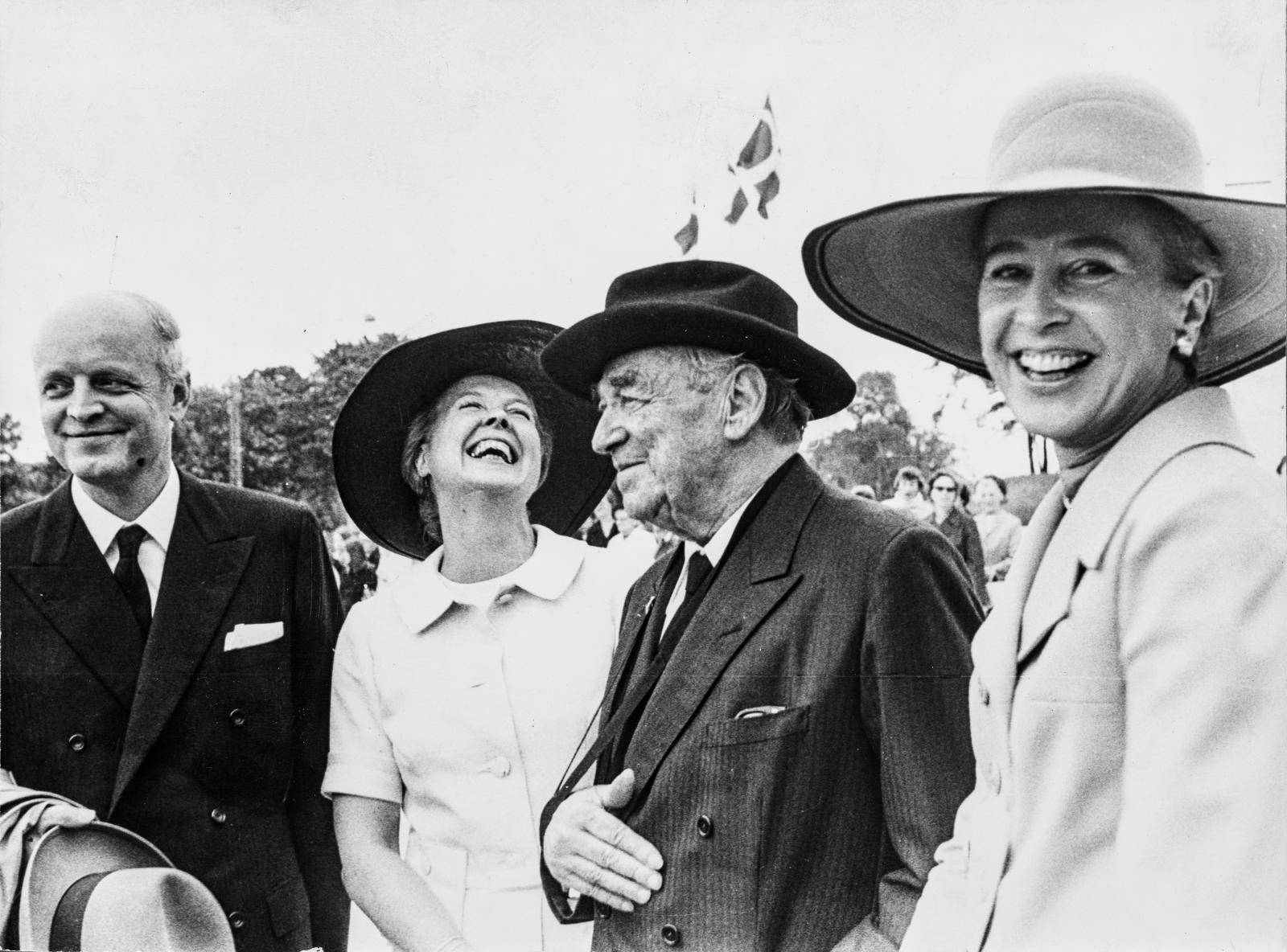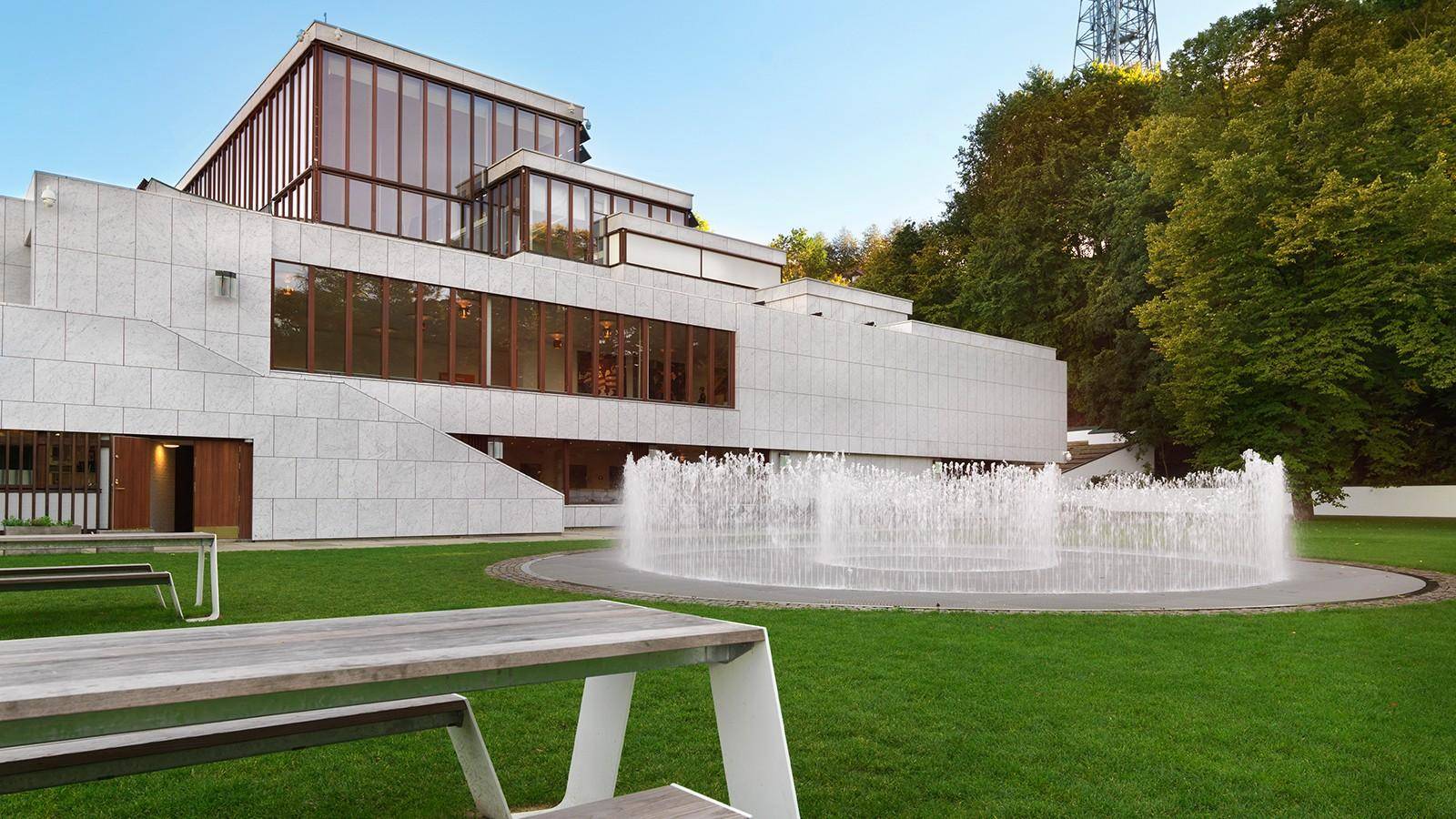
Aalborg Kunstmuseum har rødder tilbage til 1870erne men har gennem årene undergået en kæmpe forvandling, hvilket kan aflæses i museets skiftende navne, i de bygningsmæssige rammer og i kunstsamlingens karakter.
Fra at have været en jævn samling af dansk kunst har Kunsten i dag en samling af moderne og nutidig kunst af høj international klasse. Her får du et overblik over udviklingen:
Stiftelsen af Aalborg Kunstforening og jagten på en bygning
1851 Aalborg Kunstforening stiftes og begynder at arrangere udstillinger forskellige steder i Aalborg. Dette er kun den anden kunstforening i provinsen udover Aarhus. En kunsthandler i København sendte "et passende antalt billeder med dampskibet til Aalborg". Første udstilling er i Kaarsbergs Gård på hjørnet af Østerå og Ved Stranden.
1870 Aalborg Kunstforening opretter en permanent samling og går på udkig efter en passende museumsbygning. Det er brændevinsbrænder, Harald Jensen, der står bag ”Den Permanente Udstilling”, som den kaldes, og bliver kunstmuseets grundlægger.
1875 En gruppe ”velmeriterede Borgere” med Harald Jensen i spidsen udsendte en opfordring til befolkningen om at støtte byggeriet af en fælles museumsbygning mellem kunstforeningen og Aalborg Historiske Museum.
1879 Aalborg Museum bliver indviet – en bygning, der skal huse kunstmuseets kunstsamling og Historisk Museums samling samtidig.
1891 Aalborg Kunstmuseum bliver deklareret som en selvejende institution med egen bestyrelse. Harald Jensen er bestyrelsesformand.
1893-96 Det nye museum indvies. Bygningen huser i dag Aalborg Historiske Museum.
1914 Borgmester F. Bornemann bliver bestyrelsesformand for Aalborg Kunstmuseum. Museet fører herfter en stille tilværelse med skiftende bestyrelsesformænd.
1934 En gruppe interesserede borgere stifter Selskabet Aalborg Kunstmuseums Venner, hvis primære formål er at skaffe kunstmuseet en ny bygning og i anden række erhverve kunstværker til samlingen.
1936 Museets byggeudvalg udskriver en landsdækkende konkurrence om et nyt kunstmuseum. Af forskellige årsager, heriblandt krig, realiseres ingen af buddene.
Alvar Aalto og udvidelse af kunstsamling
1957 Der udskrives en nordisk arkitektkonkurrence om det nye kunstmuseum med en præmiesum på 25.000 kr. I bedømmelsen af de indkomne forslag bliver der lagt vægt på bygningens placering på området og dens samspil med omgivelserne, planlægningen af bygningen og brugen af lyset.
1958 Den 23. april overrækkes førsteprisen til Alvar Aalto og hans partnere, hustruen Elissa Aalto og den danske arkitekt, Jean-Jacques Baruël.
1963 Kontrakten med Alvar Aalto underskrives.
1967 Lars Rostrup Bøyesen, tidligere overinspektør ved Statens Museum for Kunst og rådgiver for Aalborg Kunstmuseum, tiltræder som den første museumsdirektør på Aalborg Kunstmuseum. Museet professionaliseres, og der bygges videre på det oplysningsarbejde, som den tidligere bestyrelse har påbegyndt. Lars Rostrup Bøyesen ser det som en af sine første opgaver at forbedre kvaliteten af museets samling.
1967 Lars Rostrup Bøyesen køber nye værker til museets samling. På en auktion i Stockholm bruger han hele årets indkøbsbudget på en prestigefyldt mosaik af Pablo Picasso og en collage af Le Corbusier. Dette bliver begyndelsen på en ny kurs og et højere kvalitetsniveau på museets samling.
1967 Aalborg Kommune og Kirsten og Palle Diges Fond køber Anna og Kresten Krestensens private samling af abstrakt moderne kunst til museet – ca. 400 værker fra perioden 1910-1960. Samlingen er centreret omkring dansk modernisme, COBRA-gruppen og Pariserskolen. Senere bliver samlingen suppleret med værker af bl.a. surrealister, Fluxus-kunstnere og 1980'ernes danske "unge vilde".
1967 Museet ændrer navn til Nordjyllands Kunstmuseum bl.a. for at tiltrække nye tilskudsgivere til den nye museumsbygning, som skal opføres. Museet præsenteres som et ”kunstens kulturcenter”, der skal være med til at samle landsdelen og tiltrække nye folk.
1968 De lokale og statslige bidrag til byggeriet falder på plads, og alle tilladelser er givet. Byggeriet går i gang.
1972 Alvar Aaltos museumsbygning, Nordjyllands Kunstmuseum, indvies af Hendes Majestæt Dronning Ingrid d. 8. juni. Museet skal ifølge Lars Rostrup Bøyesen være et sted, hvor ”folk føler sig hjemme og vil komme tilbage til”. Den første dag efter åbningen bliver museet oversvømmet af 4.500 besøgende, så tælleapparatet bryder sammen.

Skiftende lederskab og udvidelse af bygning
1979 Else Bülow tiltræder som museumsdirektør efter Lars Rostrup Bøyesen bliver direktør for Statens Museum for Kunst. Else Bülow rejste midler til at købe absolutte hovedværker af Wilhelm Freddie. Freddie fik for første gang en fremtrædende plads i museets samling.
1979 Karsten Ohrt tiltræder som museumsinspektør. Karsten Ohrt bliver senere museumsdirektør for Kunsthallen Brandts (1988-2007) og Statens Museum for Kunst (2007-2014).
1980 ”Børnemuseum” starter med sanseudstillinger for børn. Nordjyllands Kunstmuseum bliver det første museum i Danmark, der laver kunstudstillinger målrettet børn.
1982 Mindre udvidelse af museumsbygningen, hvor der bl.a. skabes bedre værkstedsfaciliteter. I 1982 afholdes der også en 10-års jubilæumsudstilling om Alvar Aalto.
1984 Kirsten og Axel P. Nielsens samling af bl.a. Fluxus-kunst på ca. 200 værker kom til Nordjyllands Kunstmuseum.
1985 Allis Helleland tiltræder som museumsinspektør. Allis Helleland bliver museumsdirektør for Statens Museum for Kunst (1994-2007).
1989 Nina Hobolth tiltræder som museumsdirektør efter Else Bülow.
1995 Bygningen fredes ud fra den betragtning, at den er et fuldgyldigt eksempel på Alvar Aaltos særlige fortolkning af modernismen og det eneste byggeri i Danmark, som er tegnet af den finske arkitekt.
Digitalisering og restaurering af Kunsten
1996 Museet er på forkant med den digitale udvikling og får sin første fuldt udbyggede hjemmeside på internettet – samme år som Danmarks Radio – og som det første kunstmuseum i Danmark. På det tidspunkt bruger 12 procent af danskerne internettet to timer pr. uge.
1999 Birthe Inge Christensen og John Hunovs samling blev udstillet og efterfølgende erhvervet.
2005 Anna Lise og Svend Erik Stapelfeldts samling blev erhvervet.
2008 Offentliggørelse af det nye og slagkraftige navn, KUNSTEN Museum of Modern Art Aalborg. Fra 2016 skrives Kunsten ikke længere med versaler.
2009 Gitte Ørskou tiltræder 1. august som museumsdirektør efter Nina Hobolth.
2009 Erik Veistrup donerer store dele af sin samling til KUNSTEN.
2012 Museet indvier nyt magasin til opbevaring af kunstmuseets værker med mere plads og de rette klimatiske forhold.
2014 Restaureringen af Kunsten påbegyndes.
2016 Efter halvandet års gennemgribende restaurering står museet klar til at tage imod gæster i en ny og forbedret udgave. Læs mere om restaurering her →.
2020 Lasse Andersson tiltræder 7. januar 2020 som museumsdirektør efter Gitte Ørskou. Gitte Ørskou tiltrådte i september 2019 som museumsdirektør for Moderna Museet i Stockholm.
